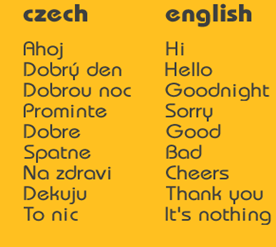Languages are always fascinating and the sheer number of languages used across the globe to describe our ideas and feelings to one another is just amazing. Moreover, they help in defining how a particular group of people view the world.

The official language of Czech Republic, the Czech language, has an interesting past and structure, which makes it ideal to study and know about. Here are some fascinating details about the Czech language that are sure to help you understand the language better.
Origin of the Language
It is believed that the language originated around the ninth century in the Great Moravia, earlier Bohemian state. The earliest record of the Czech language refers to it as ‘Proto-Czech,’ which separated from its fellow West Slavic fledglings Proto-Polish, Proto-Slovak, and Proto-Sorbian.
Similarity to Other Languages
Czech language is specifically a western Slavic language and is closely related to languages, such as Silesian and Polish. Due to it being a part of the Slavic languages group, Czech has its vocabulary shared with Indo-European family as well.
Global Czech Speakers
In the present world, it is believed that the Czech language is spoken by roughly 11 million people. Out of those 11 million, about 10 million are native of Czech Republic. The rest comprise of people of Slovakia, where it is a minority language, and European Union.
Words and Vowels
An interesting thing about Czech grammar is that most of the words are used without vowels. Additionally, one can create complete sentences without having a single vowel. This makes it very difficult for foreigners to adapt to the language and master it.
Final Word
The difficulty in learning, understanding, and pronouncing the Czech language makes it important for you to contact translator service during your visit to any Czech speaking nation. Ring at 888-670-3369 for more information on Czech language translation service.